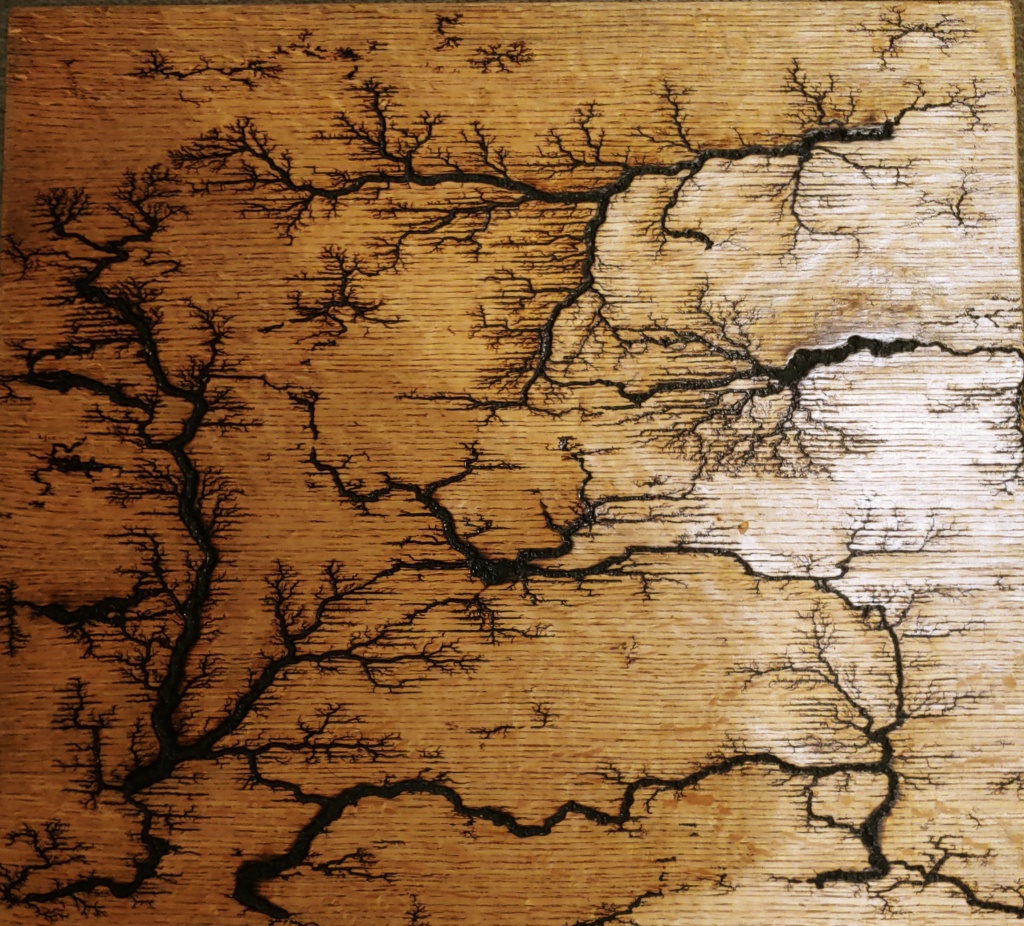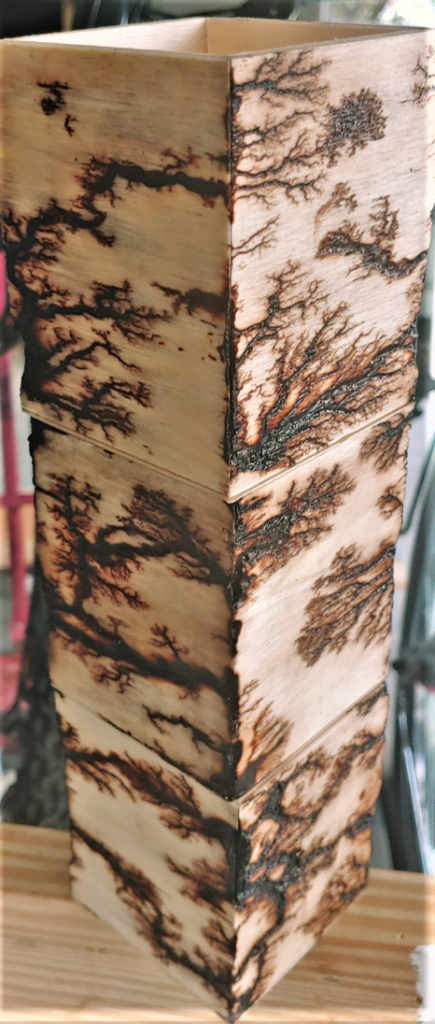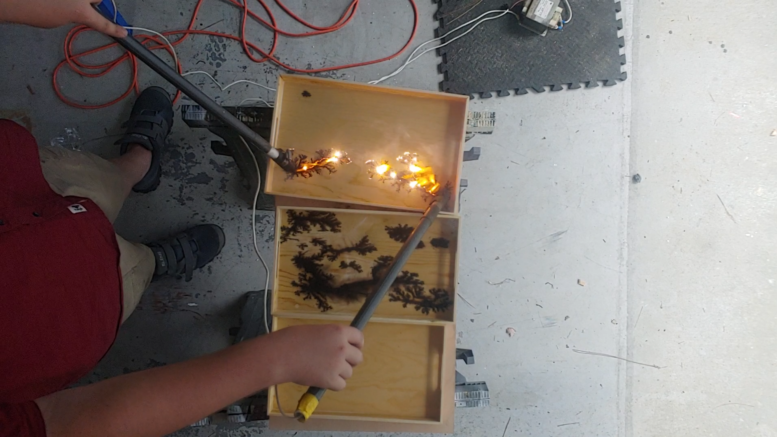By Mary Moore
William Casey spends his free time frying wood, and the result is a unique blend of science and art.
Casey, 17, moved with his family to Seven Lakes three years ago and is currently in a dual-enrollment program at Sandhills Community College, earning his college degree while simultaneously finishing high school as a home-schooled student.
When he gets a minute to himself, Casey engages in a unique process he calls “fractalizing,” in which he tames lethal levels of voltage in order to create patterns on a wooden surface.
All the young artist needs to perform the feat is a couple of PVC pipes, a lamp cord, and a microwave transformer. Add some bleach, baking soda and water to the table, slap on some gloves, and the setup is complete.
A few years ago, Casey first started toying with the idea because of his deep fascination with fractals: the branching, zigzag patterns that frequently appear in nature.
“Interestingly enough, this particular shape can be found everywhere, from trees, lightning, roots, rivers, to the veins in our own bodies,” Casey explained.

To capture the look, he begins by coating a piece of wood with a “conductive liquid” or “electrolytic solution.” In other words, baking soda or salt mix. Once the solution has time to absorb into the surface’s fiber, Casey’s canvas is ready.
A zap of 3000 volts with a 30-60 AMP then creates what he describes as “a slow motion lightning strike” that scores the wood.
Afterward, he bleaches the surface to heighten the contrast between the pattern and the background. Then there is sanding, sealing and painting to do, and occasionally Casey fills the cracks with colorful resin.
“Most of the labor is hard and mundane, but the most gratifying part is when the electricity is carving the fractals, and when it reveals the final finished product,” he said. “I wash away all of the ash, and it exposes a new pattern everytime.”
Casey doesn’t recommend people try this method at home without extensive research, because of how dangerous the voltage is.

holders. Contributed.
“I’m lucky enough to have my parents support me and allow me to work with it, under safe conditions.”
Casey has plans to expand his work into a small business when he has more time, and is already selling some pieces to interested parties. He’s also toying with an idea for a machine that would remove some of the labor from the process.
While he can do custom work on any piece of wood a person provides (including furniture, picture frames, etc.), Casey noted that the end product is unpredictable.
“I can easily “fractalize it” but I am a bit nervous as I have little to no control over where the electricity goes, so some patterns might turn out ugly, or not to someone’s expectations.”
Regardless, he’s happy to give it a shot. Anyone interested in buying a premade piece or having something “fractalized” by William Casey can contact him at bluecat1221@outlook.com.
Contact Mary Moore at (910) 692-2462 or mmoore@thepilot.com.








